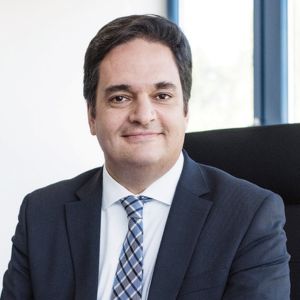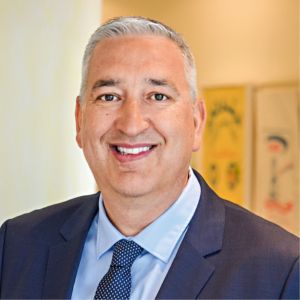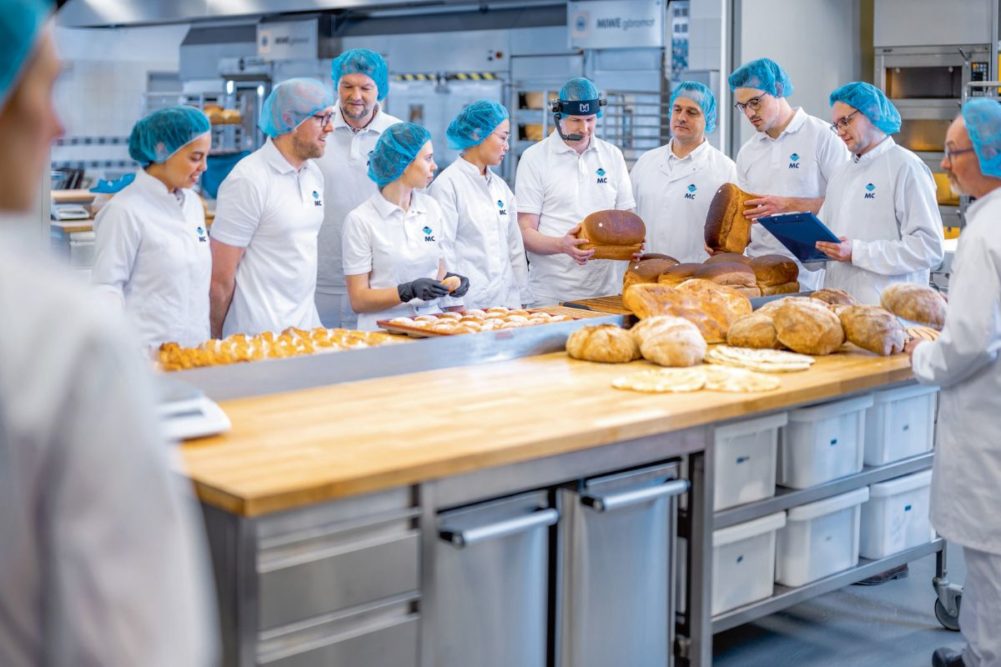AHRENSBURG, GERMANY — A lot has changed in the global flour milling industry during the past century, and Ahrensburg, Germany-based Mühlenchemie has been there every step of the way, offering innovative solutions in flour treatment and improvement.
Founded in 1923 in Frankfurt, Germany, by Carl Grüning, it was personal interest and research that drove the company’s developments in the early years. The knowledge of enzymes, vitamins, systems and processes built up there over the decades has resulted in unique and innovative solutions for treating flour.
Part of the Stern-Wywiol Gruppe since 1990, Mühlenchemie in recent decades has expanded its global presence, providing innovative enzyme solutions for safe, quality, affordable food for the growing world population. The company notes that its consultants “maintain close relationships to over 2,000 mills in over 150 countries, (resulting) in custom solutions tailored to current local challenges.”
The company, which calls its scientists “flourists,” emphasizes that its focus is on “enriching, standardizing and improving flour.”
World Grain, in honor of Mühlenchemie’s 100th anniversary, recently interviewed Matthias Moser, managing director, and Peter Steiner, business unit global head, to reflect on the company’s storied history and its promising future.
WG: Companies that stay in business for a century must constantly evolve and reinvent themselves. What have been the key milestones and transformations that have occurred during the history of this company? I assume becoming part of the Stern-Wywiol Gruppe in 1990 is high on that list?
 Matthias Moser
Matthias MoserMatthias Moser: There are many reasons a company succeeds. For MC I see two factors that are part of the DNA of the company. One is the entrepreneurial mindset. This is about creativity, decisiveness, and a pioneer spirit. As a company that does research, we had this from the beginning. And yes, integration into the Stern-Wywiol Gruppe was a milestone in this regard. It was the basis for the success we have today. The interaction with the other units in the Group gave a new energy to our research and innovation. As a family company, the Group supports people and teams, and brought new expertise into our company. We obtained the resources to expand our research and development and grow internationally. The second factor in success is a rigorous customer orientation. None of our solutions to the challenges of milling comes about without customer input. Each solution is worked out using a partner approach.
WG: Mühlenchemie began growing internationally in the 1980s. What has been the key to the company’s continued growth globally?
 Peter Steiner
Peter SteinerPeter Steiner: Yes, the globalization started in the 1980s. Markets became interlinked, the milling industry went through a consolidation, and raw materials markets became more international. At the same time, flour became a global product. As Matthias said, the integration of Mühlenchemie into the Stern-Wywiol Gruppe in 1990 gave us the opportunity to respond to these developments and enter new target markets. Both factors triggered our international growth.
WG: You have a presence on four continents and in 16 countries. What are some of the challenges of serving a global market as opposed to a regional one?
Matthias Moser: Instead of one-size-fits-all, we present highly specific, individual strategies and products, always with the goal of expanding the value creation of mills. As we want to solve customers’ problems with a partner approach, we advise, develop, source and produce where those customers are. For this to work, we built capacity under the widely varying conditions of different locations. At the same time, this also offers great opportunities and added value for customers, since our global presence gives us a deep understanding of widely differing local requirements.
WG: What are your customers demanding from Mühlenchemie? What are the latest trends regarding flour improvement?
Peter Steiner: Every miller wants to produce high-quality flour and make money doing it. This is exactly the point where we can bring relevance to the global milling industry. For now, we see three major trends: Firstly, service speed to customer requests; secondly, ever faster reaction time to grist changes; and thirdly, the creation of added value through alternative and local flours to empower millers to being less dependent from volatile global wheat supply. As a service provider, we need to know about developments in raw materials, product quality and consumer behavior in order to speak the same language as the millers and to provide them the appropriate solutions. Additionally, MC offers extensive services, from wheat and flour analysis to rheology to custom solutions and their application technology testing worldwide.
WG: You established the Composite Flour Award as part of the 100th anniversary celebration. Who is eligible for the award and how will the winner be selected? What other activities have been or will be associated with the 100-year celebration?
Peter Steiner: The Composite Flour Award is a perfect symbol of 100 years of MC. The goal is to find answers to the questions of tomorrow in milling. Composite flour will be more and more important in the future. We’ve created the first solutions with our own products based on local grains like sorghum, cassava and maize, focusing on Africa and Latin America. However, in other areas of wheat substitution there is a lack of background knowledge. Many questions remain open, especially around the cultivation and processing of different wheat alternatives. With the award we want to motivate research institutions and companies to drive this important topic forward together with us.
WG: Explain your work in composite flour and why it is important to millers, bakers and consumers?
"None of our solutions to the challenges of milling comes about without customer input. Each solution is worked out using a partner approach." - Matthias Moser, managing director, Mühlenchemie
Matthias Moser: Fluctuating availability and sharply rising wheat prices are endangering the food supply for more and more people. For flour, the staple food, to remain available in good quality at prices everyone can afford, we need to become more independent from wheat and the world markets. Alternatives to wheat are a way to do that.
WG: Mühlenchemie sponsors World Flour Day every March 20. Why is it important to have that day of recognition for the milling industry?
Peter Steiner: The idea of World Flour Day was born by the FlourWorld Museum in Wittenburg. Flour has special significance for humanity, not just culturally, but also in view of the rapidly increasing global population. The millers and the flour processing industry have a great responsibility to feed the ever-growing world population. Although flour is one of our oldest staple foods, the raw material itself and its related milling industry have long been underestimated. The World Flour Day is a perfect vehicle to make the industry more visible and to appreciate its efforts to feed the world.
WG: The FlourWorld Museum is another way to promote the importance of the industry you serve. How did this idea come about? How many flour sacks are on display there and what other items are on display?
Matthias Moser: The story of the FlourWorld Museum is really very special, so much so that one could not have made it up. It all started when Volkmar Wywiol, the founder of the Stern-Wywiol Gruppe, was walking on the beach in Dubai in 1998 and ran across a flour sack by the Emigrain brand. With this chance find, he started collecting flour sacks. The collection grew so fast that in 2008 he opened a museum just for it. The logos on the sacks tell of the many traditions, stories and myths around flour. Today the “Sackotheque,” a collection of over 3,800 sacks from 140 countries and the only one of its kind in the world, forms the heart of the FlourWorld Museum in Wittenburg. The museum is being continuously expanded as a permanent exhibition on the cultural history of flour, under the title “Flour.Power.Life.” For example, an impressive symbol of the ancient history of grain cultivation is a replica of Ötzi, the Man from The Ice, who greets visitors to the multimedia exhibit. He opens visitors’ eyes for the beginning of agriculture in Europe 5,300 years ago. For the MC centenary we opened a new Milling Room dedicated to the Industrial Revolution, an epoch that let the world population grow, while at the same time creating new technical solutions to provide for it. The subject of modern industrial milling was developed and presented in collaboration with the Bühler Group. The FlourWorld Museum was conceived as a “Grain Knowledge Forum,” and it also serves as a conference center for knowledge transfer.
WG: You recently unveiled a new corporate design and identity realignment. What does that entail?
Peter Steiner: With the new brand outfit, MC is showing its new self-image internally and externally. It’s based on the Mühlenchemie roots that made the company what it is today, what it stands for, and what it will do going forward. We see ourselves as a global market leader, innovation driver and connector of the milling industry, as well as a creative flour treatment expert who is always there working with the customer. The logo has been modernized and emphasizes MC as the short form of Mühlenchemie, with a confident, dynamic, and international look. It makes our strong brand even more tangible worldwide.
WG: What are the biggest business challenges Mühlenchemie faces as it begins its second century of serving the milling industry?
Matthias Moser: We always must have the right answer to our customers’ requirements and have to adapt to constantly changing market-related conditions fast. In-depth local market knowledge, product know-how and state-of-the-art applications technology is key. As well as constant innovation and cooperation with the industry. That is the only way we can expand our market leadership. Understanding flour means always keeping an eye on the markets of the world. We’ll continue on our path, being on site with experts worldwide, facing local challenges with curiosity and enthusiasm, and using this knowledge for the benefit of our customers.
WG: What are some of the latest, most important innovations developed by your scientists in the areas of flour improvement?
Peter Steiner: Most recently, we got into the subject of flatbread. Flatbread has long been a staple food for much of the world’s population. In many regions, the industrialization of food production has advanced greatly in recent years, and flatbreads are no longer made exclusively artisanally, but also industrially. In this context, topics like freshness and dough elasticity are of highest importance. The different recipes and manufacturing processes presented us with a variety of challenges. One result of our research projects is our Flatbread Toolbox that addresses the many requirements for artisanal and industrial flatbread production. It contains various improvers that offer solutions for all the different kinds of flatbread. They make the final product better and more economical. In any case, we always work closely and hand in hand with our customers to solve their individual needs.
WG: Enzymes and vitamins are at the heart of your business. What makes them so vital to flour quality? How is your expertise in this area continuing to grow?
Peter Steiner: Enzymes are bio-catalysts. They improve economy, workability and product quality in flour processing. They reduce the environmental effects and carbon footprints of baked foods production. In addition, they enable the use of a wider range of wheat varieties, the reduction of additives like emulsifiers and sugar, and improvement of the texture and crumb tenderness of baked foods and their retention during storage. They even improve the digestibility of high-fiber flours. MC has comprehensive applications technology and well-equipped enzyme laboratories for the development of enzyme systems — in the Futuremaker Technology Center in Ahrensburg, Germany, and in Technology Centers around the world.
WG: In the press release announcing the 100th anniversary, it mentions that Mühlenchemie can react quickly to climatic, geopolitical and economic factors on the raw material markets. Can you expand on examples of how the company does this?
Peter Steiner: Again, it’s the speed with which millers now have to respond to changed requirements. In our pilot mill in Ahrensburg, we analyze grain samples while the bulk shipment is still making its way by sea to a mill. The miller gets information on the composition and processing characteristics of the flour before the wheat arrives to the mill. When it arrives, the miller already knows how to prepare the optimum grist. Our MC Connect Glasses are another example. With them, our customers can follow baking trials and analyses in real time as if they were in the same place. Decisions can be made together fast with everyone involved. In this way we provide efficient, immediate, and location-independent technical assistance. Customers gain one advantage most of all: Time!
WG: How will the development of GM wheat, hybrid varieties and gene editing of wheat impact Mühlenchemie? Do you anticipate that these endeavors will have a significant impact on the wheat and flour milling industry in the coming decade?
Matthias Moser: The world population is growing and needs to eat. What isn’t growing is the land surface available for growing food. The world’s population can be fed in the future only if we manufacture and consume food more efficiently. New breeds and biotechnical innovations will play an important role and influence the wheat and milling industry and thereby also flour treatment. Our research teams are already working on the next generation of enzyme solutions to continue to meet the future needs of millers to produce excellent flour in the future.






